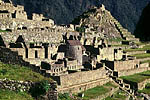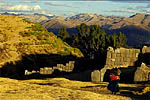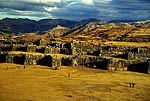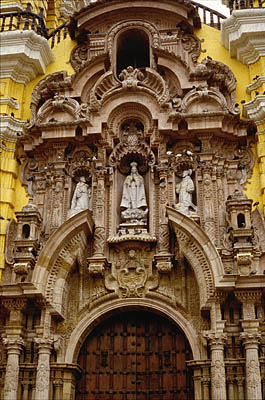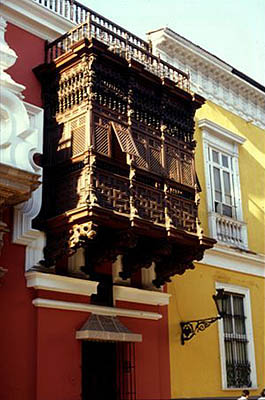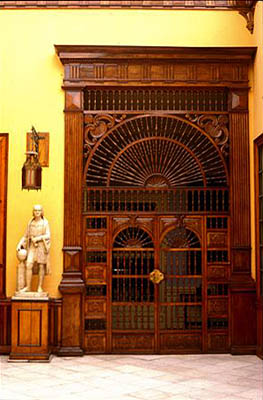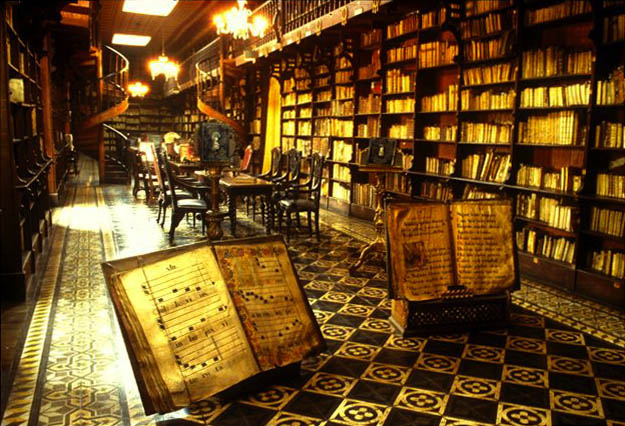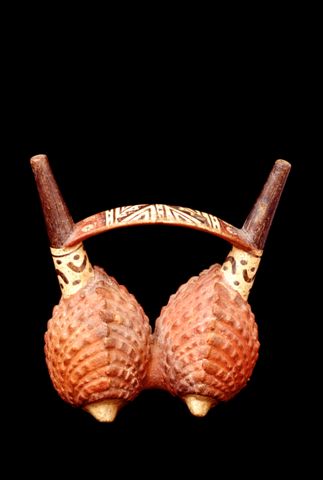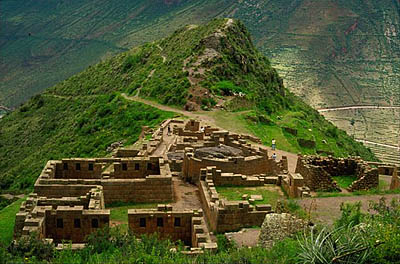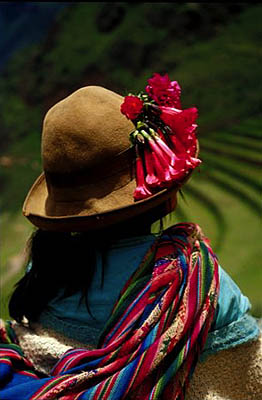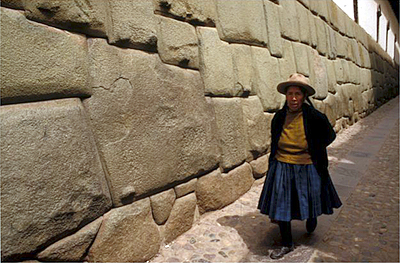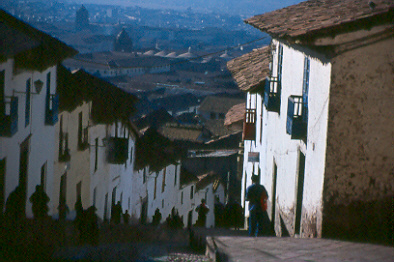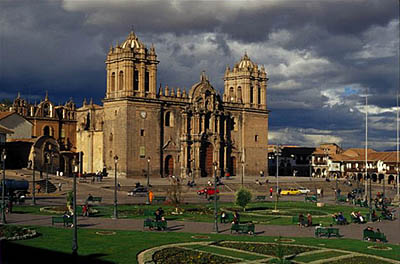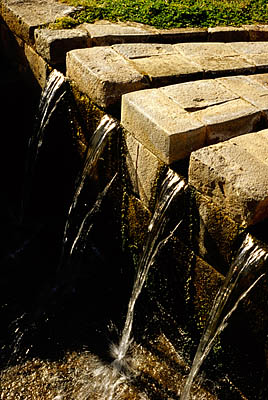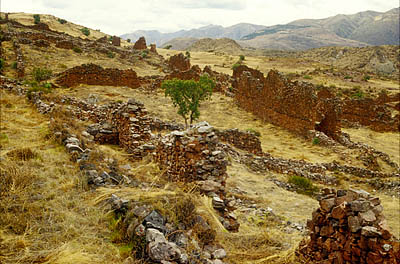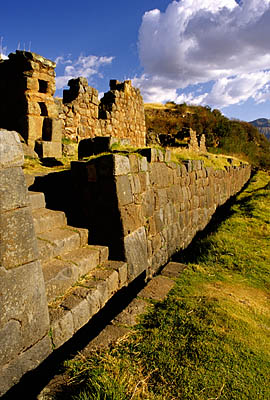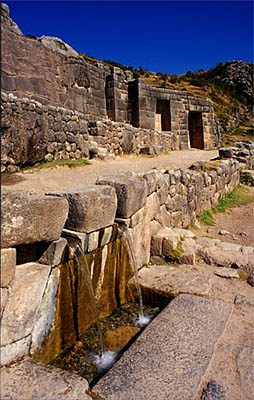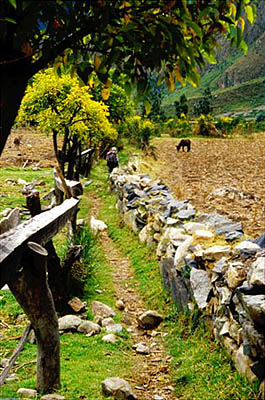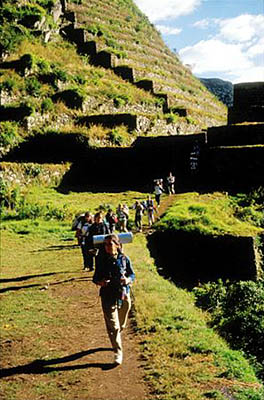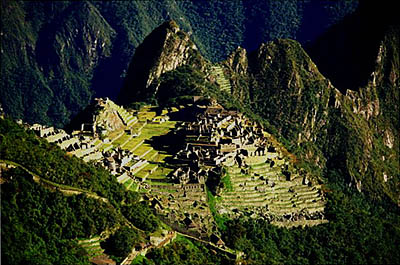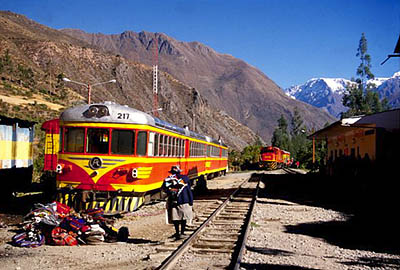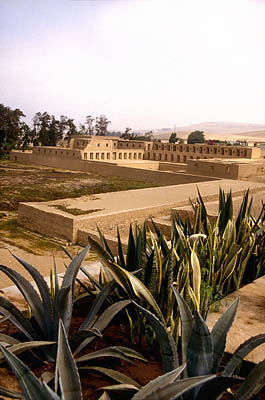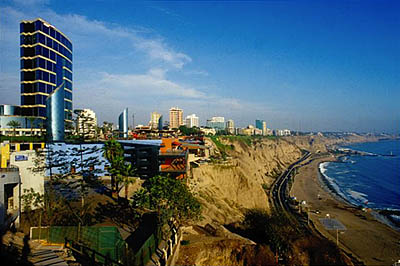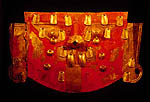![]()
Legacy of the Incas
Machu Picchu Luxury Tours
Peru:
Machu Picchu - Lake Titicaca
(11 days/10 nights)
Machu Picchu Luxury Tours
Peru:
Machu Picchu - Lake Titicaca
(12 days/11 nights)
Empire of the Sun
Machu Picchu Luxury Tours
Peru:
Machu Picchu - Lake Titicaca
(14 days/13 nights)
Ancient Civilizations of Peru
Machu Picchu Luxury Tours
Peru:
Colca Canyon - Machu Picchu
Lake Titicaca
(16 days/15 nights)
Archaeological & Ecological
Treasures
Machu Picchu Luxury Tours
Peru & Ecuador:
Galapagos - Machu Picchu
Lake Titicaca (or Amazon)
(18 days/17 nights)
Grand Tour of the Inca Empire
Machu Picchu Luxury Tours
Peru:
Colca Canyon - Amazon
Machu Picchu- Lake Titicaca
(22 days/21 nights)
Ancient & Colonial Capitals
Machu Picchu Luxury Tours
Peru:
Machu Picchu
(10 days/9 nights)
Inca Trail to Machu Picchu
Machu Picchu Luxury Tours
Peru:
Machu Picchu
(13 days/12 nights)
Machu Picchu & Galapagos
Machu Picchu Luxury Tours
Peru & Ecuador:
Machu Picchu - Galapagos
(15 days/14 nights)
Galapagos & Machu Picchus
Machu Picchu Luxury Tours
Ecuador & Peru:
Galapagos - Machu Picchu
(18 days/17 nights)
Enchanted Isles of the Galapagos
Machu Picchu Luxury Tours
Ecuador:
Galapagos
(11 days/10 nights)
Galapagos & the Kingdom of Quito
Machu Picchu Luxury Tours
Ecuador:
Galapagos - Andes
(16 days/15 nights)
Galapagos & the Amazon
Machu Picchu Luxury Tours
Ecuador:
Galapagos - Amazon
(16 days/15 nights)
Historic Haciendas of the Andes
Machu Picchu Luxury Tours
Ecuador:
Cotopaxi - Antisana - Otavalo
(7 days/6 nights)
© 2013 Inka's Empire Corporation.
All rights reserved.
![]()
Lima - Sacred Valley - Cuzco - Inca Trail - Machu Picchu
Machu Picchu Luxury Tours
Machu Picchu, the Lost City of the Incas.
Photo: Mylene d'Auriol Stoessel. Machu Picchu Luxury Tours.
Follow in the footsteps of the Incas...
-- Kimberly Fay, LuxuryLink.com
Land Price (13 days/12 nights)
Frugal Luxury US$ 7,365 De Luxe US$ 8,560 Imperial US$ 9,765 per person
The land price includes escorted transfers, private excursions with professional guides and chauffeurs, private trek (with professional guide, porters and equipment), entrance fees, selected category of accommodations, gourmet cuisine (see details) with full board while on the Inca Trail, all land and water transportation, and travel insurance for guests through the age of 59 years (over that age, there is a supplementary fee). All prices are per person based on two people sharing a guest room. For a detailed description of our services, see Opulent Itineraries.
Map
Detail Map
Sectional Map
Hotels
10 Nights
11 Nights
Just the Treks
Royal Inca Trail
Inca Trail Classic
Inca Trail Explorer
Intra-Tour Flights & Fares
Air fares are in addition to the land price.
Lima - Cuzco - Lima: US$ 550 per person
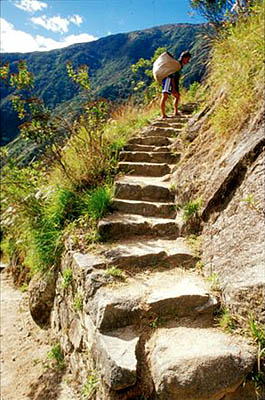
Porter on the trail toward Wiñayhuayna, Inca Trail to Machu Picchu.
Photo: Mylene d'Auriol Stoessel. Machu Picchu Luxury Tours.
In the imperial city of Cuzco, fabled Machu Picchu and the Sacred Valley; you will experience the glory of the Inca Empire, all brought to vivid life during your four-day trek on the Inca Trail. The timeless landscape and the archaeological sites will take you back to ancient times, as you hike on the stone roads, cross the hanging bridges and walk in the footsteps of the Incas to their sacred citadel.
All international flights arrive in Lima, a five-century-old Spanish colonial city and home to the country's major museums. The next morning, enter the historic district's crown jewels. In the afternoon, discover the treasures of the Incas at the Museo Larco.
A morning flight into the Andes takes you to Cuzco, the ancient capital. You will have two days to explore its Inca and colonial monuments and two days for the reknowned archaeological sites and native markets of the Sacred Valley, before starting your private trek on the Inca Trail. During the tour's spectacular focal point, you will relive the journey of the Incas from imperial Cuzco to the winter palace at the top of an Andean peak called Machu Picchu.
Enjoy the trek in Inca style: your personal porter will carry your pack, freeing you to admire and photograph the magnificent landscapes, flora, fauna and archaeological sites along the trail. Other porters will carry the equipment, set up camp and prepare exceptional meals. "Roughing it" has never been so luxurious! After four days of hiking and three nights of camping, you will arrive at the Sun Gate, the ancient entrance to Machu Picchu, which reveals a majestic panorama of the citadel -- the first view that the Incas had upon arriving from Cuzco. Descend to the ruins and walk among them. After a night of luxury in the Orient-Express Sanctuary Lodge, witness sunrise over the "Lost City" and explore its temples and terraces before returning by train to Cuzco. More about the trek.
Return to Lima to explore the Pachacamac archaeological site. After a lunch of artistic cuisine by chef Rafael Osterling, walk in the artists' quarter of Barranco, have a farewell drink and transfer to the airport for your overnight flight home, completing your trek on the Inca Trail to Machu Picchu.
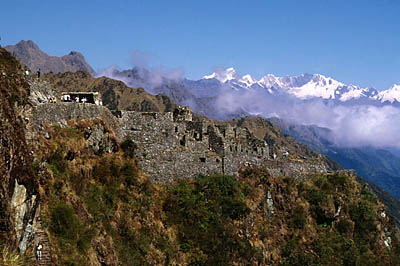
Sayacmarca, Inca Trail
to Machu Picchu.
Photo: Renzo Uccelli. Machu Picchu Luxury Tours.
What our guests have to say:
My deepest appreciation goes to Omar, who really made the time on the Inca Trail special...
Omar Aragón was the best guide on the Inka Trail and for Machu Picchu. Despite inclement weather, he kept everyone's spirits high. His energy is contagious, and his friendly and welcome manner was appreciated. Would highly recommend Omar as a guide for Cusco, Inka Trail and Machu Picchu.
-- Ron Ellis
We camped off the beaten path and felt we had a unique experience
compared to other groups.
We had an wonderful time! Everything went totally smoothly without hitch or hangup. Our guide, Manuel Usca was absolutely incredible. A totally excellent person and master of the Inca Trail. We camped off the beaten path and felt we had a unique experience compared to other groups. I would recommend him HIGHLY to anyone wanting a once in a lifetime experience. Our porters and chef were also top notch -- they earned our admiration and respect. Thank you for arranging an amazing trip!
-- Matthew Dugan, Chelsea Dugan & Brian Jeffery
I'm infinitely glad that I engaged the services of Inka's Empire Tours...
Yes! We had a fantastic time. The tour was incredible and the quality of service impeccable. I must admit that the hike was harder than I had imagined but all the more spectacular and satisfying... Teddy was the best guide we could have hoped for. His knowledge of the flora and fauna combined with his understanding of history and archeology was amazing. We managed to camp in 3 beautiful spots and rarely saw other tourists along the way, except for at the highest pass. I think this had to do with Teddy's understanding of timing and the fact that we were doing the 5-day tour instead of the 4 day one. Most recommended because the feeling of having the Inca Trail all to yourself is well worth it... Both the evenings in the Sanctuary Lodge and the Monasterio were wonderful, a most appreciated luxury after 3 nights in tents.
-- Valerie Seefried
I don't know what to really say about this hike except that it is really amazing...
With respect to the porters, guide, chef everything was perfect. In fact, I actually preferred our chef's cooking to any of the restaurants. A little simpler food, which I enjoy. He did a great job with Jessica's dietary needs, in fact lots of the food was entirely vegetarian and I also enjoyed it. We had fun playing cards and drinking wine with the group. The wine was excellent. Having the portable toilet is a huge plus. I can say without that I don't think Jessica would have enjoyed herself. The tent and sleeping bags were good. We had followed the instructions you provided and were well prepared.
-- Edwin Upson & Jessica Sklute
What Luxury Link has to say about Inca Trail to Machu Picchu.
If your time is limited, consider our 11-night Inca Trail to Machu Picchu, which omits the second day in Cuzco.
Facade, La Iglesia y Convento de San Francisco, Lima.
Photo: Mylene d'Auriol Stoessel. Machu Picchu Luxury Tours.
Highlights
Lima
Day 1: Flight to Lima. International arrival in the afternoon or evening, reception and transfer to your hotel. Overnight in the Orient-Express Miraflores Park.
Day 2: Lima. Morning walking tour in the colonial quarter, visiting the Plaza de Armas and entering La Casa de Aliaga and La Iglesia y Convento de San Francisco. View the exterior of La Iglesia y Convento de Santo Domingo, Lima's oldest convent, and enter La Catedral for a short visit. In contrast to the religious structures, the Torre Tagle Palace is the city's best surviving example of secular colonial architecture. Lunch at the Café del Museo. Afternoon at the Museo Larco. Dine at Astrid & Gastón, one of the highest notes in the Peruvian culinary scene. Overnight in the Orient-Express Miraflores Park.
Sacred Valley
Day 3: Lima - Cuzco - Sacred Valley (Chinchero). Transfer to the airport. Flight to Cuzco. Reception and drive to the Sacred Valley of the Incas. Visit to the Chinchero market and church. Private weaving demonstration. Continue to the Moray archaeological site and the ancient salt pans of Maras. Chef-prepared picnic lunch. If you like, walk down rural paths to the Urubamba River. Arrival at your hotel. At a nearby hacienda, an honored shaman will conduct an ancient ceremony still observed by the indigenous people of Peru to obtain health, well-being and luck. After this memorable experience, you will return to your hotel. Dinner and overnight in the Orient-Express Rio Sagrado.
Day 4: Sacred Valley (Pisaq - Ollantaytambo). After a short visit to the Pisaq market, hike in the Pisaq ruins. Lunch at 3 Keros. Tour of the Ollantaytambo ruins. Dinner and overnight in the Orient-Express Rio Sagrado.
Day 5: Cuzco (Inca & Colonial Monuments). Drive to Cuzco. Morning walk to Inca monuments in the colonial quarter, including the Stone of Twelve Angles, Huacaypata (now called the Plaza de Armas and dominated by the Spanish colonial Cathedral), the fine Inca walls of Inti Q'ijllo, Ajlla Wasi (House of the Virgins of the Sun) and Qorikancha (Temple of the Sun). Lunch at Pacha Papa before a visit to an artisan's workshop and the Church of San Blas.
Afternoon stroll around Cuzco with your guide. Facing the Plaza de Armas, you will find notable Spanish religious monuments, such as the Compañia de Jesus and the Iglesia y Convento de la Merced. The convent is famous for its jeweled monstrance, encrusted with diamonds and precious stones, including rubies, topazes and emeralds. Finish at the Convento y Museo de Santa Catalina and the Palacio Arzobispal. Return to your hotel. This evening, you will see pre-Inca and Inca art at the Museo de Arte Precolombino, with a dinner of nouvelle Andean cuisine in the courtyard. Overnight in the Orient-Express Monasterio.
Day 6: Cuzco (The Collasuyu Road - Awana Kancha - Nearby Inca Monuments). Morning excursion beyond the ancient fortress that guarded the Valley of Cuzco. Coming back from the colonial village of Andahuaylillas on the Collasuyu Road, follow the route of early travelers from the southern quarter of the empire. Pass through the ancient gate of Rumicolca, gaze at the pre-Inca ruins of Pikillaqta and admire the royal garden of Tipon before your arrival in the Imperial City of the Incas. Lunch at Limo. Afternoon drive to Awana Kancha, where you will see all four species of South American camelid. Proceed to the nearby Inca monuments of Tambomachay, Puka Pukara, Qenqo and Saqsaywaman. This evening, dinner at chef Gastón Acurio's Chicha. Overnight in the Orient-Express Monasterio.
Inca Trail (Llaqtapata) Pre-Departure Information
Day 7: Cuzco - Inca Trail (Chillca - Llaqtapata). Drive through the Sacred Valley to Chillca, our trailhead at Km. 77 of the Cuzco-Machu Picchu railroad. Forty-seven kilometers away, hidden in the mist, lies the fabled Inca citadel of Machu Picchu. Crossing a footbridge, we trek through a dry cactus zone beneath soaring views of Mt. Veronica, with the turbulent Urubamba River on our right. We reach our campsite at the terraces of Llaqtapata, and explore the outlying areas of this ancient and massive complex.
Inca Trail (Llulluchapampa)
Day 8: Inca Trail (Llaqtapata - Llulluchapampa). The trail climbs gently into the mountains through the last inhabited village of Huayllabamba, and then more steeply past a rushing stream through enchanted, native polylepis woodland. Crossing the rim of a small plateau, we abruptly find ourselves in the puna, the treeless grasslands of the high Andes. We camp below mighty crags, looking eastward to the snowpeaks and valleys of the Huayanay massif.
Inca Trail (Phuyupatamarca)
Day 9: Inca Trail (Llulluchapampa - Phuyupatamarca). We climb to the first and highest pass, Warmiwañusca (4,200 m/13,776 ft). Descending to the forested Pacamayo Valley, we pick up an Inca stairway and ascend again, past the small Inca site of Runkuracay. We reach the second pass, then descend to the ruins of Sayacmarca, an intricate labyrinth of houses, plazas and water channels perched precariously on a rocky spur overlooking the Aobamba Valley. At the third pass, we camp by pinnacles topped with Inca viewing platforms overlooking the archaeological complex of Phuyupatamarca.
Inca Trail (Machu Picchu)
Day 10: Inca Trail (Phuyupatamarca - Wiñayhuayna - Machu Picchu). We explore Phuyupatamarca, then begin a long descent through cloud forest. An Inca stairway partly cut from living granite leads us finally to the site of Wiñay Wayna. In the afternoon, we follow the last stretch of trail to Intipunku and encounter a backdrop of twisting gorge and forested peaks framing the magical city of Machu Picchu. We descend the royal flagstone walkway through the heart of Machu Picchu before staying overnight in the Sanctuary Lodge. Dinner at the hotel's Tampu Restaurant. Overnight in the Orient-Express Sanctuary Lodge.
Cuzco
Day 11: Machu Picchu - Orient-Express Vistadome - Cuzco. We spend the day in both guided and individual exploration. Lunch at the hotel's Tampu Restaurant. After a full-on experience of this glorious monument to the Inca achievement, we return to Aguas Calientes and board the train to Cuzco. Evening arrival at the Poroy Station, on the outskirts of Cuzco, reception and transfer to your hotel. Dinner and overnight in the Orient-Express Monasterio.
Lima
Day 12: Cuzco - Lima. Transfer to the airport. Flight to Lima. Arrival, reception and transfer to your hotel. Morning drive to Pachacamac, the most reknowned pre-Inca and Inca pilgrimage site of the coast. Upon returning to Lima, lunch at the extraordinary Huaca Pucllana restaurant, which reinterprets the Peruvian Criollo tradition. Afterward, continue to Barranco for visits to one of the country's finest crafts shops, the Museo de Arte Colonial Pedro de Osma, La Puente de los Suspiros and La Iglesia de La Ermita. After arrival back at the hotel, have a farewell drink, order from room service or just rest before the transfer to the airport for your Overnight Flight Home. Relax in the VIP Club while awaiting departure and enjoy a buffet of light fare and beverages, including Peru's famous pisco sour. Day Room in the Orient-Express Miraflores Park.
Home
Day 13: Lima - Home. Flight and arrival home.
Details
Wooden balcony of the Torre Tagle Palace, Lima.
Photo: Mylene d'Auriol Stoessel. Machu Picchu Luxury Tours.
At ancient Peru's most exalted pilgrimage site, eroded temples speak of the pre-Columbian cultures that worshipped the earth god Pachacamac ("he who gives life to the universe"). When the Incas arrived, they respected the temples and religion of those people, allowing them to worship that god alongside the Incas' own god, the Sun. For their deity, the Incas erected a great stone temple on a cliff above the sea. When the Spaniards arrived, they destroyed the holiest place in their lust for gold but found that the only treasure it contained was spiritual.
Nearby Lima, founded by the conquistador Francisco Pizarro in 1535, came to be the capital of the New World for a period of three years. It reached its grandest splendor in the 17th and 18th centuries. The city has two principal attractions: the colonial quarter, where a visit to La Casa de Aliaga is to go back in time to the earliest years of the Spanish conquest, and the archaeological museums, which display gold, ceramic and textile masterpieces of Peru's pre-Inca and Inca civilizations. The country's independence movement was led by Jose de San Martin of Argentina and Simon Bolivar of Venezuela. San Martin proclaimed Peruvian independence from Spain on July 28, 1821, marking the end of the colonial period and the beginning of the republican era.
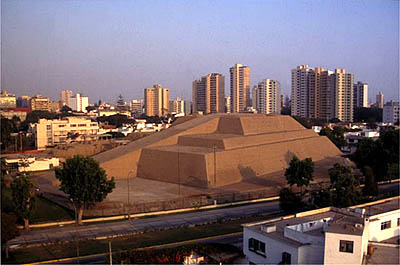
Huaca de Huallamarca, Lima.
Photo: Mylene d'Auriol Stoessel. Machu Picchu Luxury Tours.
Day 1: Flight to Lima
International arrival this afternoon or evening in the five-century-old colonial city of Lima, "City of the Kings" and the capital of Peru. Reception and escorted transfer to your hotel in the garden district of Miraflores, high above the Pacific Ocean and home to the city's grand 19th century mansions. Overnight in the Orient-Express Miraflores Park.
Entry door of the Casa Aliaga, Lima.
Photo: Mylene d'Auriol Stoessel. Machu Picchu Luxury Tours.
Day 2: Lima
Breakfast. This morning, walk with your guide in the heart of the city, which preserves its Spanish colonial heritage of the 16th-18th centuries. It was Francisco Pizarro, the founder of Lima, who determined the area for the Plaza de Armas as well as the location of the structures around it. In the center of the plaza is a splendid bronze fountain of 1650. Around the plaza and originally dating back to the city's beginnings in 1535 are the Cathedral, destroyed in the earthquake of 1746 and rebuilt in 1758; the Archbishop's Palace, rebuilt in 1924; and the Presidential Palace, rebuilt in 1937. Surviving intact is La Casa de Aliaga. Built in 1535 by Don Jeronimo de Aliaga, a member of Pizarro's conquering forces and co-founder of the city, it is still inhabited by the original family. Your visit to this antique-filled mansion is to go back in time to the earliest years of the Spanish conquest of Peru.
17th century library, La Iglesia y Convento de San Francisco, Lima.
Photo: Mylene d'Auriol Stoessel. Machu Picchu Luxury Tours.
On your walking tour, enter the 1674 La Iglesia y Convento de San Francisco, the most spectacular of Lima's colonial-era churches. It features cloisters and interiors of Spanish tiles; Moorish-style, carved-wood ceilings; a fine museum of religious art; a 17th century library of twenty-thousand books, many dating from the first years of the city's founding; and catacombs begun in 1546. View the exterior of the 1599 La Iglesia y Convento de Santo Domingo, Lima's oldest convent, and enter the 1758 La Catedral for a short visit. In contrast to the religious structures, the 1735 Torre Tagle Palace, with its gorgeous baroque stone doorway and carved-wood balconies, is the city's best surviving example of secular colonial architecture.
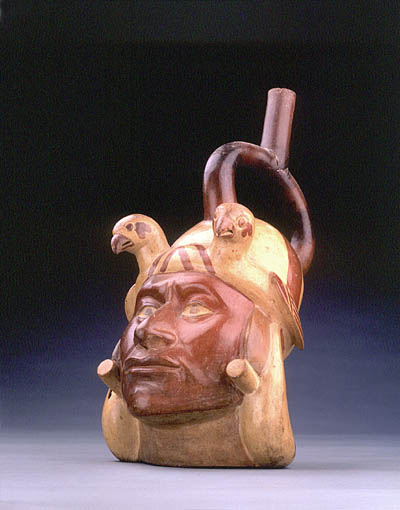
Mochica, 500 AC.
Photo: Museo
Larco, Lima, Peru. Machu Picchu Luxury Tours.
Lunch of traditional Peruvian cuisine at the Café del Museo, located in the gardens of the Museo Larco and directed by Peru's most prestigious chef, Gastón Acurio. Founded in 1926, the Museo Larco exhibits the world's largest private collection of pre-Columbian art -- a treasure trove of gold, silver, semi-precious stones and textiles. The collection's predominant strength is in Mochica ceramics, of which the erotic ones are the most famous. Their notariety ought not to obscure the fact that the museum presents a complete view of the cultural development of ancient Peru through a selection of its 45,000 pieces, housed in a colonial building of the 18th century.
"Huaco" depicting Spondylus shells, Northern Huari culture, c. 800 AD.
Museo Larco, Lima. Photo: Mylene d'Auriol Stoessel. Machu Picchu Luxury Tours.
Return to your hotel to relax. This evening, dine at Astrid & Gastón. When the restaurant was founded a decade ago by Gastón Acurio and Astrid Gutsche, the restaurant's cuisine was largely French. Both chefs had studied in Paris' Le Cordon Bleu. Gradually, though, as they rediscovered Peruvian flavors and culinary traditions, the kitchen began to incorporate local dishes and ingredients, moving towards the current sophisticated Criollo concept that characterizes the restaurant today and makes it one of the highest notes in the Peruvian culinary scene. Overnight in the Orient-Express Miraflores Park.

Terraces of Pisaq, Sacred Valley.
Photo: Mylene d'Auriol Stoessel. Machu Picchu Luxury Tours.
But the favorite residence of the Incas was at Yucay, about four leagues distant from the capital. In this delicious valley, locked up within the friendly arms of the sierra, which sheltered it from the rude breezes of the east, and refreshed by gushing fountains and streams of running water, they built the most beautiful of their palaces. Here, when wearied with the dust and toil of the city, they loved to retreat, and solace themselves with the society of their favorite concubines, wandering amidst groves and airy gardens, that shed around their soft, intoxicating odors, and lulled the senses to voluptuous repose. Here, too, they loved to indulge in the luxury of their baths, replenished by streams of crystal water which were conducted through subterraneous silver channels into basins of gold. The spacious gardens were stocked with numerous varieties of plants and flowers that grew without effort in this temperate region of the tropics, while parterres of a more extraordinary kind were planted by their side, glowing with the various forms of vegetable life skilfully imitated in gold and silver! Among them the Indian corn, the most beautiful of American grains, is particularly commemorated, and the curious workmanship is noticed with which the golden ear was half disclosed amidst the broad leaves of silver, and the light tassel of the same material that floated gracefully from its top.
-- William H. Prescott, The History of the Conquest of Peru, 1847
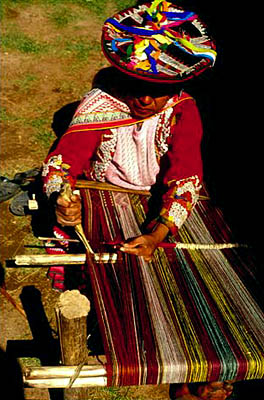
Weaver of Chinchero, Sacred Valley.
Photo: Mylene d'Auriol Stoessel. Machu Picchu Luxury Tours.
Day 3: Lima - Cuzco - Sacred Valley (Chinchero)
Breakfast. Early transfer to the airport for the flight to Cuzco, the capital of the ancient Inca Empire, called Tawantinsuyo. The name of Cuzco is a Spanish version of the native word Q'osqo, which means the "Navel of the Universe". Arrival, reception and drive to the Sacred Valley of the Incas. On the way, visit Chinchero, the birthplace of the rainbow, according to Inca legend. The village is on the altiplano, or highlands, above Cuzco and the Sacred Valley, at an elevation of 12,340 feet, and rises against a superb Andean landscape dominated by eternally snow-capped peaks. This late 15th century agricultural center maintains its Inca traditions, one being its composition of "ayllus", or groups of indigenous, related families that work communally in the cultivation of their fields.
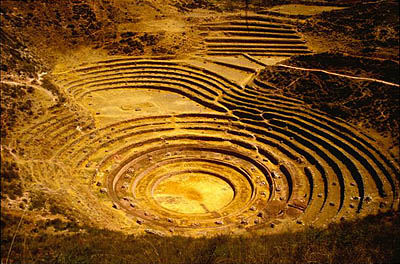
Sunken agricultural terraces of Moray, Sacred Valley.
Photo: Mylene d'Auriol Stoessel. Machu Picchu Luxury Tours.
Traditional weaving is preserved, in part, through the efforts of The Center for Traditional Textiles of Cusco, which has arranged a private demonstration by one of the finest weavers. Another tradition that traces it roots back to the Incas is the barter, or "trueque", market. In Chinchero, people still meet to trade good for goods, just as in ancient times, when money did not exist. The market, noted for its textiles, takes place in the main square, at the foot of an Inca wall. Such traditions are not unique to Chinchero; they still exist throughout the altiplano of Peru. The pueblo exhibits a peculiar Andean-Hispanic architectural style, and paintings by the famous native artist Chiwantito hang in a beautiful colonial church. The canvases are in the Cuzqueña style, dating back to the early Spanish period.
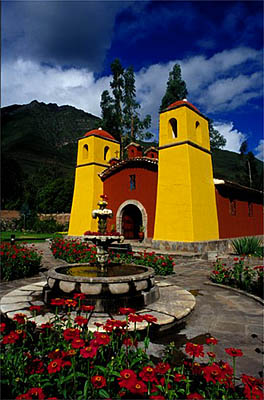
Yucay Church, Sacred Valley.
Photo: Mylene d'Auriol Stoessel. Machu Picchu Luxury Tours.
Afterward, visit the impressive archaeological site of Moray. These circular terraces were built by the Incas in natural sinkholes on a limestone plateau overlooking the Sacred Valley and, according to experts, were used to grow crops in different microclimates. Nearby, below the colonial town of Maras, are age-old, terraced salt mines. At a scenic place along the route, we'll set up a table and chairs for a picnic lunch prepared by chef Tatiana Mendoza of Cuzco. If you like, take a three-quarter-hour walk down rural paths to the Urubamba River, where your driver and car will be waiting. Arrival at your hotel, the gracious Rio Sagrado, on the banks of the Urubamba, the Inca's sacred river.
Traditional healer's ceremony.
Photo: Kerry Chirinos. Machu Picchu Luxury Tours.
At a nearby hacienda, an honored shaman will conduct an ancient ceremony still observed by the indigenous people of Peru. To perform this ritual, the shaman, Hubert Lazarte, gathers such traditional items as coca leaves and wine for a simple offering. Each participant selects three coca leaves and chews them while making wishes for health, well-being and luck, then adds the leaves to the tribute, which includes medicinal and aromatic plants. The shaman prays in the Inca language of Quechua, asking Pacha Mama (Mother Earth) and the Apus (mountain spirits) to grant the wishes as he burns the offering on an altar before burying it in the earth. After this memorable experience, you will return to your hotel. For dinner, executive chef Federico Ziegler presents a delicious fusion of Urubamba’s best kept culinary secrets, Peruvian traditional zest and international delicacies. Dinner and overnight in the Orient-Express Rio Sagrado.
Ruins of Pisaq surrounding the solar calendar, Sacred Valley.
Photo: Mylene d'Auriol Stoessel. Machu Picchu Luxury Tours.
Day 4: Sacred Valley (Pisaq - Ollantaytambo)
Breakfast. Drive through along the Urubamba River to the colonial town of Pisaq, where a popular handicraft fair take place under the main square's century-old tree, with wares displayed on vividly patterned and colored textiles. On Sundays, the traditional mass is held in Quechua, the Inca language, at the local church, which is attended by the village leaders from the surrounding communities. They wear their typical costumes and carry their traditional scepter of authority, or vara, that gives origin to their name of Varayoc.
Girl of Pisaq adorned in traditional attire and cantuta flowers, Sacred Valley.
Photo: Mylene d'Auriol Stoessel. Machu Picchu Luxury Tours.
High on a mountain above, tower the imposing remains of an ancient settlement. The Pisaq ruins take up the entire mountain and are made up of different neighborhoods, or squares, the main one being Intihuatana, which is admired for the architectural skill of its constructions. Its central feature is a monumental solar calendar on a promontory from which there are spectacular outlooks. At the same time, the pre-Hispanic cemetery is of great interest, as it is the largest found in this part of the continent, containing thousands of tombs, some of them looted. Pisaq also is famous for the colossal terraces that circle the mountains and the fabulous watchtowers, which were used as observation points as well as for control and military defense.
Fortress of Ollantaytambo, Sacred Valley.
Photo: Mylene d'Auriol Stoessel. Machu Picchu Luxury Tours.
A lunch of nouvelle Andean cuisine by chef Ricardo Behar at 3 Keros. El Huacatay and 3 Keros fight for the title of the best restaurant in the Sacred Valley. The two restaurants greatly elevate the gastronomic offering of the valley.

Agricultural terraces, Fortress of Ollantaytambo, Sacred Valley.
Photo: Mylene d'Auriol Stoessel. Machu Picchu Luxury Tours.
Continue to the Ollantaytambo archeological site, a gigantic agricultural, administrative, social, religious and military center in the era of Tawantinsuyo. According to legend, the fortress belonged to a powerful lord, Ollantay, who fell in love with Princess Cusi Coillor, daughter of Inca Pachakuteq. It later served Manco Inca after his defeat by the Spaniards at Saqsaywaman.The architectural style of its streets and squares reflects Inca town planning, with enormous polyhedral stones forming the walls and trapezoidal doorways of temples and palaces set along rectilinear and narrow streets, which have been inhabited continuously since Inca times.
Incan town of Ollantaytambo, Sacred Valley.
Photo: Mylene d'Auriol Stoessel. Machu Picchu Luxury Tours.
Above the town, a mountain rises which houses innumerable Inca constructions, such as magnificently-crafted temples and terraces. One striking construction is the partially-destroyed main temple, believed to be the Temple of the Sun, whose carved-stone facade is made up of six perfectly-sculpted, red monoliths. The mountainside on which this enormous fortress is built is strategic: it dominates three valleys that come together at this point. Across one valley, tremendous blocks of stone lie abandoned along the route from the quarry site to Ollantaytambo, their uncompleted journey marking the arrival of the "Conquistadores". Return to your hotel. Dinner and overnight in the Orient-Express Rio Sagrado.
The Stone of Twelve Angles, Cuzco.
Photo: Mylene d'Auriol Stoessel. Machu Picchu Luxury Tours.
The most renowned of the Peruvian temples,
the pride of the capital, and the wonder of the empire, was at Cuzco,
where, under the munificence of successive sovereigns,
it had become so enriched, that it received the name of Coricancha,
or "the Place of Gold."
-- William H. Prescott, The History of the Conquest of Peru, 1847
Day 5: Cuzco (Inca & Colonial Monuments)
Breakfast. Drive to Cuzco. Morning walking tour in the imperial city of the Incas to their ancient monuments, including the Stone of Twelve Angles, Huacaypata (Leisure Square -- now called the Plaza de Armas and dominated by the Spanish colonial Cathedral). the fine Inca walls of Inti Q'ijllo, the Ajlla Wasi (the House of the Virgins of the Sun) and Qorikancha (the Temple of the Sun). All of these constructions date from the era of 1440 A.D., when Inca Pachakuteq, desiring a capital befitting his great empire, pulled down the adobe city and rebuilt Cuzco in stone.
The Inca palaces were in the form of "canchas", or enclosures, formed by massive stone walls with living quarters, temples and courtyards within. Throughout Cuzco, you will see the Inca walls, built upon by the Spaniards in colonial style. The Cathedral was built over the Inca Wiracocha's palace. The Palacio Arzobispal, or Archbishop's Palace, was erected in the 16th century in an Arabesque style on the walls of Hatunrumiyoc, the palace of Inca Sinchi Roca, which contains the Stone of Twelve Angles. The Church of Santo Domingo (begun in 1534), was built over Qorikancha, the most important religious structure in the Inca Empire. When the earthquake of 1950 collapsed much of the superimposed colonial architecture, it revealed the ancient Temples of the Sun, the Moon, the Stars, Thunder and Lightning, and the Rainbow.
The interior of the temple was the most worthy of admiration. It was literally a mine of gold. On the western wall was emblazoned a representation of the deity, consisting of a human countenance, looking forth from amidst innumerable rays of light, which emanated from it in every direction, in the same manner as the sun is often personified with us. The figure was engraved on a massive plate of gold of enormous dimensions, thickly powdered with emeralds and precious stones. It was so situated in front of the great eastern portal, that the rays of the morning sun fell directly upon it at its rising, lighting up the whole apartment with an effulgence that seemed more than natural, and which was reflected back from the golden ornaments with which the walls and ceiling were everywhere incrusted. Gold, in the figurative language of the people, was "the tears wept by the sun," and every part of the interior of the temple glowed with burnished plates and studs of the precious metal. The cornices, which surrounded the walls of the sanctuary, were of the same costly material; and a broad belt or frieze of gold, let into the stonework, encompassed the whole exterior of the edifice.
Adjoining the principal structure were several chapels of smaller dimensions. One of them was consecrated to the Moon, the deity held next in reverence, as the mother of the Incas. Her effigy was delineated in the same manner as that of the Sun, on a vast plate that nearly covered one side of the apartment. But this plate, as well as all the decorations of the building, was of silver, as suited to the pale, silvery light of the beautiful planet. There were three other chapels, one of which was dedicated to the host of Stars, who formed the bright court of the Sister of the Sun; another was consecrated to his dread ministers of vengeance, the Thunder and the Lightning; and a third, to the Rainbow, whose many-colored arch spanned the walls of the edifice with hues almost as radiant as its own...
All the plate, the ornaments, the utensils of every description, appropriated to the uses of religion, were of gold or silver. Twelve immense vases of the latter metal stood on the floor of the great saloon, filled with grain of the Indian corn; the censers for the perfumes, the ewers which held the water for sacrifice, the pipes which conducted it through subterraneous channels into the buildings, the reservoirs that received it, even the agricultural implements used in the gardens of the temple, were all of the same rich materials. The gardens, like those described, belonging to the royal palaces, sparkled with flowers of gold and silver, and various imitations of the vegetable kingdom. Animals, also, were to be found there --among which the llama, with its golden fleece, was most conspicuous-- executed in the same style, and with a degree of skill, which, in this instance, probably, did not surpass the excellence of the material.
-- William H. Prescott, The History of the Conquest of Peru, 1847
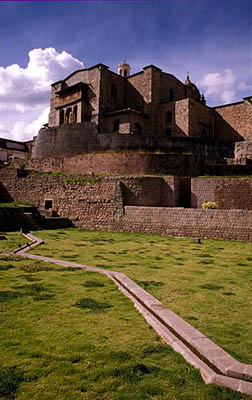
Qorikancha, the Temple
of the Sun, Cuzco.
Photo: Mylene d'Auriol Stoessel. Machu Picchu Luxury Tours.
In the time of the Incas, this garden... was entirely made of gold and silver; and there were similar gardens about all the royal mansions. Here could be seen all sorts of plants, flowers, trees, animals, both small and large, wild and tame, tiny, crawling creatures such as snakes, lizards, and snails, as well as butterflies and birds of every size; each one of these marvels being placed at the spot that best suited the nature of what it represented.
There were a tall corn stalk and another stalk from the grain they call quinoa, as well as other vegetables and fruit trees, the fruits of which were all very faithfully reproduced in gold and silver. There were also, in the house of the Sun, as well as in that of the king, piles of wool made of gold and silver, and large statues of men, women, and children made of the same materials, in addition to storerooms and recipients for storing the grain they called pirua, all of which, together, tended to lend greater splendor and majesty to the house of their god the Sun.
All of these valuable works were made by the goldsmiths attached to the Temple, from the tribute of gold and silver that arrived every year from all the provinces of the Empire, and which was so great that the most modest utensils used in the temple, such as pots and pans, or pitchers, were also made of precious metals. For this reason, the temple and its service quarters were called Coricancha, which means the place of gold.
-- Garcilaso de la Vega, The Royal Commentaries of the Inca, 1609
San Blas artisans' quarter, Cuzco.
Photo: Walter H. Wust. Machu Picchu Luxury Tours.
A lunch of traditional Andean cuisine by chef Rodolfo Rolando in the patio of Pacha Papa. Just across the street, visit an artisan's workshop and the Church of San Blas (built in 1562). It houses an imposing pulpit from the late 17th century that, for many, is the finest example of a carved wooden structure in the world. Chiseled from a single cedar trunk, the pulpit features angels, demons, saints, virgins and beasts. A native artist, Juan Thomas Tuirutupa, is believed to have been the sculptor. The main altarpiece is Baroque and exceptionally beautiful.
Afternoon stroll around Cuzco with your guide. Known in Inca times as Huacaypata (Leisure Square), the plaza was surrounded by palaces of finely-sculpted stone. On its southwest side flowed the river Huatanay. On the far bank was the market square of Cusipata (Joy Square), now occupied by the arcade of buildings known as the Portal de Panes. The only remaining portion of that square is the lovely Plaza Regocijo, with its picturesque Queñuales trees. Although the river was later covered over with stone slabs, a division remained: Haucaypata was reserved for the nobles, Cusipata for the commoners. Yet, all could celebrate together in the great square of ancient Cuzco, from which two intersecting roads led out to Tawantinsuyo (the Four Quarters of the Empire).
Cathedral and Plaza de Armas, Cuzco.
Photo: Mylene d'Auriol Stoessel. Machu Picchu Luxury Tours.
Facing the Plaza de Armas, you will find notable Spanish religious monuments, such as the Compañia de Jesus (begun in 1576) and the Iglesia y Convento de la Merced (begun in 1536). The convent is famous for its jeweled monstrance, encrusted with diamonds and precious stones, including rubies, topazes and emeralds. A good place to relax and take in the spectacle is the popular Cafe Ayllu, which offers delicious apple pastries and a memorable view. It's just to the left of the Cathedral.Finish at the Convento y Museo de Santa Catalina (begun in 1601) and the Palacio Arzobispal (begun about 1540). Return to your hotel.
This evening, at the Museo de Arte Precolombino, you will see 450 pre-Inca and Inca masterpieces dating from 1250 B.C. to 1532 A.D. Afterward, dinner of nouvelle Andean cuisine by Manuel Cordova at the Map Café, in the museum's courtyard. Overnight in the Orient-Express Monasterio.
Fountains of Tipon, the water garden of Inca Wiracocha.
Photo: Mylene d'Auriol Stoessel. Machu Picchu Luxury Tours.
Day 6: Cuzco (The Collasuyu Road - Awana Kancha - Nearby Inca Monuments)
Breakfast. Morning excursion beyond the ancient fortress that guarded the Valley of Cuzco. Coming back from the colonial village of Andahuaylillas on the Collasuyu Road, follow the route of early travelers from the southern quarter of the empire, which reached beyond Lake Titicaca. Pass through the ancient gate of Rumicolca, gaze at the pre-Inca ruins of Pikillaqta and admire the royal garden of Tipon before your arrival in the Imperial City of the Incas.
In Inca times, the name of Andahuaylillas was Antawaylla (anta = copper and waylla = field). Its lands are fertile; its people quiet and friendly. Andahuaylillas has two attractions -- the Church of San Pedro de Andahuaylillas and the huge main square it faces. The square, considered one of the most beautiful in the region, is surrounded by pisonay and palm trees. The church, built in 1580 and known as the Sistine Chapel of the Americas, features a simple facade in marked contrast to its rich Baroque interior of gilded altars, wall paintings and polychromatic ceilings.
Rumicolca, pre-Inca gateway to the Valley of Cuzco.
Photo: Mylene d'Auriol Stoessel. Machu Picchu Luxury Tours..
Departing toward Cuzco, we first encounter Rumicolca, an immense stone fortress at the southeastern entrance to the Valley of Cuzco. It originally served as an entry point into the pre-Inca Huari empire and defended nearby Pikillaqta, their largest city. Centuries later, the Incas fortified and refined the rough construction of the original structure with massive blocks of polished andesite. The fortress became the gateway to their imperial city, guarding the road from Collasuyu, the southern quarter of their "Land of Four Quarters". The southern quarter was the largest, stretching to Lake Titicaca, Bolivia, Chile and Argentina.
The pre-Inca and Inca ruins of Pikillaqta.
Photo: Mylene d'Auriol Stoessel. Machu Picchu Luxury Tours.
Pikillaqta, the largest Huari city and the major pre-Inca city in the region, reached its cultural height between 800 AD and 1100 AD, in the period corresponding to the Huari regional confederation. A massive hilltop complex of stone structures overlooking Lake Lucre, its long, straight streets and big, rectangular city blocks full of buildings are surrounded by high, flagstone and mud-mortared walls, which taper as they rise. In some of the rooms, little idols made of turquoise were found and now can be seen in the Museo Inka, of Cuzco. "Pikillaqta" translates as the "City of Fleas". The name comes from the presence of many tiny rooms, only four square meters in area, that seem to be part of a military garrison.
Tipon, the water garden of Inca Wiracocha.
Photo: Mylene d'Auriol Stoessel. Machu Picchu Luxury Tours.
Tipon is exceptional for the harmony achieved in the movement of water through its fine stone structures. This beautiful complex is composed of twelve enormous agriculturual terraces, walls of perfectly polished stone, long stairways, aqueducts (some subterranean) and ornamental waterfalls. According to legend, Tipon was one of the royal gardens ordered by the 8th Inca, Wiracocha. It is believed that the site was earlier the royal farm of his father, the 7th Inca Inca Yawar Huacac, at which time it was dedicated to a religious cult and agricultural experimentation. Return to Cuzco for a lunch of Peruvian cuisine by chef Coque Ossio at Limo.
Ritual fountains of Tambomachay, Cuzco.
Photo: Mylene d'Auriol Stoessel. Machu Picchu Luxury Tours.
This afternoon, see all four species of South American camelid -- the llama, alpaca, vicuña and guanaco -- at Awana Kancha, a living museum of Andean culture. From Awana Kancha, drive to the nearby Inca monuments of Tambomachay, Puka Pukara, Qenqo and Saqsaywaman. Tambomachay is believed to have been dedicated to the worship of water and its aqueducts are fed by springs all year long. The site includes a liturgical fountain and three terraces with structures made from polyhedral blocks of stone, joined without mortar. The setting is bucolic and the spring water is cold, pure and delicious. Drink from the sacred fountain and make your devotions to one of life's essential elements.
Puka Pukara (red fortress) is located at a strategic point along the road to Antisuyo (the jungle quarter of the Inca Empire). It served as a checkpoint and was a military and administrative center. The Inca's retinue received food and lodging here when he stopped at Tambomachay, on his way to the Sacred Valley.
Qenqo is a vast, rocky hilltop carved into staircases, holes and channels, probably built to store the chicha (fermented maize beer) used in Inca rituals. The site features a semi-circular patio studded with several large niches surrounding a stone figure embedded within a chamber, rather like an idol inside its own shrine.
Temple and fortress of Saqsaywaman, Cuzco.
Photo: Mylene d'Auriol Stoessel. Machu Picchu Luxury Tours.
To truly appreciate fortress of Saqsaywaman, one must realize that what may now be seen is only the base of a colossal construction of a series of three successively-higher, defensive structures made from enormous blocks of stone, joined together with great precision.
Inside this triple enclosure, three tall towers were erected on a large narrow ground. The largest of them was called Mayac Marca, which means the round tower. It was built over a clear, abundant spring, fed by underground canalizations, concerning which nobody knew from where or how they came... This round tower contained rooms with gold and silver paneled walls, on which animals, birds, and plants figured in relief, as though in a tapestry. It was here that the king lived when he came for a rest in the fortress...
The two other towers, which were round, not square, in shape, were called Paucar Marca and Sacllac Marca, and were used to house soldiers of the garrison, which was composed only of Incas by privilege, ordinary men, even combatants, not being allowed inside this fortress, which was the house of the Sun, both its arsenal and its temple...
An underground network of passages, which was as vast as the towers themselves, connected them with one another. This was composed of a quantity of streets and alleyways which ran in every direction, and so many doors, all of them identical, that the most experienced men dared not venture into this labyrinth without a guide, consisting of a long thread tied to the first door, which unwound as they advanced....
It would have been in the interest of the Spaniards to maintain this fortress, and even to repair it at their own expense, because, quite alone, it gave proof of the grandeur of their victory and would have served as a witness to it for all eternity. And yet, not only did they not keep it up, but they hastened its ruin, demolishing its hewn stones, in order to construct their own Cuzco homes at less cost.
They made their portals and thresholds with the big flat stones that formed the ceilings, and to make their stairways, they did not hesitate to tear down entire walls, provided they were based on a few stones that could be used for steps.
And so, that is how the Spaniards destroyed the Cuzco fortress.
-- Garcilaso de la Vega, The Royal Commentaries of the Inca, 1609
Campesina at Saqsaywaman, Cuzco.
Photo: Mylene d'Auriol Stoessel. Machu Picchu Luxury Tours..
Saqsaywaman was considered a fortress by the Spaniards, since it was a place of defense, weapons and war. It was considered the House of the Sun by the Incas because, at the same time, it was a place of worship and sacrifice. Notably, it was the site of the most important ceremony of the empire, Inti Raymi, the Festival of the Sun. Its name means "Satiated Hawk" and it was built in approximately 77 years (1431-1508), during the reign of Inca Yupanqui and Wayna Qhapaj. It began being destroyed from 1537 until 1561, becoming the base for the building of the Spanish Cathedral, churches and homes. "Neither the bridge of Segovia, nor the buildings built by Hercules or the Romans, are so worthy of being admired, as this" says the Spanish chronicler and soldier Pedro Sancho de la Hoz, who saw Inca Cuzco intact, along with Pizarro in 1533. Return to your hotel. This evening, enjoy a dinner of novo-Andino cuisine at Chicha, directed by Peruvian celebrity chef Gastón Acurio. Overnight in the Orient-Express Monasterio
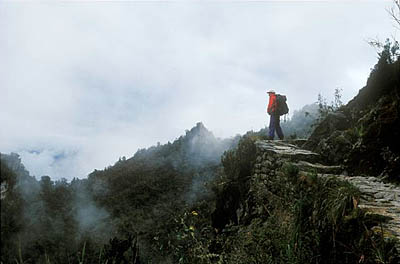
Before Phuyupatamarca, Inca Trail to Machu Picchu.
Photo: Mylene d'Auriol Stoessel. Machu Picchu Luxury Tours.
The Inca Trail, now a massive buttressed structure of granite paving stones,
continues along the steep upper fringes of the cloud forest
through a colorful riot of orchids, bromeliads, mosses and ferns.
Photo album: Marvels of Machu Picchu
One of the most popular treks in the world is, without doubt, the Inca Trail. It combines ancient archaeological sites, snow-covered mountain scenery, cloud forests and a rich biodiversity that includes many different species of birds and beautiful orchids. The trek ends at "The Lost City of the Incas" -- Machu Picchu. Here, travelers discover the highly sophisticated architecture of the Incas that amazed the American explorer, Hiram Bingham, when he discovered the citadel in 1911. Although the trek is rated as moderate; before starting, we strongly suggest spending at least two days at this elevation to totally adjust to the altitude.
The cities of the Incas were connected by well-made roads, of which the one from Cuzco to Machu Picchu, now called the Inca Trail, has become the most famous trekking route in South America. Our five-day program allows the traveler time to explore and enjoy the amazing archaeological sites, landscapes and nature along the way. While most other programs force trekkers to speed through the stunning high-altitude Inca Trail, We take the time to enjoy this once-in-a-lifetime experience. We camp the first three nights, enjoy great meals and sturdy tents. The hikes average six to seven hours each day, including some time to explore sites we pass through and to take in the unparalleled scenery. On the fourth afternoon, we arrive at Machu Picchu after the crowds have left, and have time to explore the tranquil ruins. After a well-deserved night in a comfortable hotel, we return to Machu Picchu to see the ruins in the perfect morning light. In the afternoon, we return to Cuzco by train. This program is specially designed to offer a more relaxed trek and a deeper understanding of Inca culture.
Your private trekking party will consist of yourselves, a select guide who is an expert in archaeology and ecology, a chef, a chief porter and two porters per trekker. The porters will carry the tents, sleeping bags and matresses, cooking gear, food, drinks and other necessary camping equipment, all of which will be provided. They also will carry each trekker's pack of personal items. Departure from or return to Ollantaytambo, instead of Cuzco, is optional. For a shorter version of the Inca Trail, we recommend our 4-day Inca Trail Classic trek. For a short version, see the Royal Inca Trail. A list of what to bring and a commentary about the archaeological sites, landscapes and nature appear in the Pre-Departure Information.
Trail toward Llaqtapata, Inca Trail to Machu Picchu.
Photo: Mylene d'Auriol Stoessel. Machu Picchu Luxury Tours.
Day 7: Cuzco - Inca Trail (Chillca - Llaqtapata)
Breakfast. A spectacular drive through the Sacred Valley takes us to Chillca, our trailhead at Km. 77 of the Cuzco-Machu Picchu railroad. Forty-seven kilometers away, hidden in the mist, lies the fabled Inca citadel of Machu Picchu. Crossing a footbridge, we take an undulating trek through a dry cactus zone beneath soaring views to the snows of Mt. Veronica, with the turbulent Urubamba River on our right. We reach our campsite at the imposing, sculpted Inca farming terraces of Llaqtapata, and explore further downstream to the outlying areas of this ancient and massive complex.
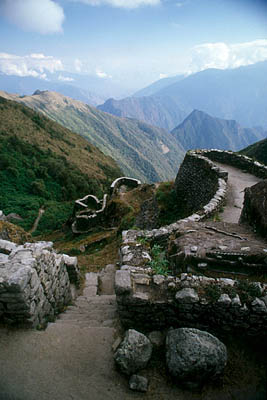
Sayacmarca, Inca Trail
to Machu Picchu.
Photo: Renzo Uccelli. Machu Picchu Luxury Tours.
Day 8: Inca Trail (Llaqtapata - Llulluchapampa)
The trail climbs gently into the mountains through the last inhabited village of Huayllabamba, and then more steeply past a rushing stream through enchanted, native polylepis woodland. Crossing the rim of a small plateau, we abruptly find ourselves in the puna, the treeless grasslands of the high Andes. We camp below mighty crags, looking eastward to the snowpeaks and valleys of the Huayanay massif.
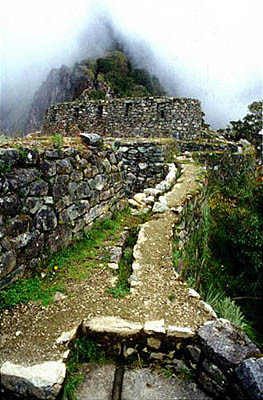
Sayacmarca, Inca Trail to Machu Picchu.
Photo: Mylene d'Auriol Stoessel. Machu Picchu Luxury Tours.
Day 9: Inca Trail (Llulluchapampa - Phuyupatamarca)
We climb to the first and highest pass, Warmiwañusca (4,200 m/13,776 ft), with spectacular views of the trail ahead to the second pass. Descending to the forested Pacamayo Valley, we pick up an Inca stairway and ascend again, past the small Inca site of Runkuracay. We reach the second pass, where the landscape opens onto spectacular new views to the snowpeaks of the Pumasillo range, then descend to the ruins of Sayacmarca (Inaccessible Town), an intricate labyrinth of houses, plazas and water channels perched precariously on a rocky spur overlooking the Aobamba Valley. The Inca Trail, now a massive buttressed structure of granite paving stones, continues along the steep upper fringes of the cloud forest through a colorful riot of orchids, bromeliads, mosses and ferns. At the third pass, we camp by pinnacles topped with Inca viewing platforms overlooking the archaeological complex of Phuyupatamarca (Cloud-level Town).
Intipata, Inca Trail to Machu Picchu.
Photo: Mylene d'Auriol Stoessel. Machu Picchu Luxury Tours.
Day 10: Inca Trail (Phuyupatamarca - Wiñayhuayna - Machu Picchu)
We explore the wondrous maze of Inca stone towers, fountains and stairways spilling down the mountainside at Phuyupatamarca, then begin a long descent through ever-changing layers of cloud forest. An Inca stairway partly cut from living granite leads us finally to the site of Wiñay Wayna (Forever Young), the largest and most exquisite of the Inca Trail sites. In the afternoon, we follow the last stretch of trail across a steep mountainside through a lush, humid cloud forest of giant ferns and broad-leaf vegetation. Suddenly, we cross the stone threshold of Intipunku (Sun Gate) and encounter an unforgettable sweep of natural beauty and human artistry -- a backdrop of twisting gorge and forested peaks framing the magical city of Machu Picchu.
We descend the royal flagstone walkway, past outlying shrines and buildings and through the heart of Machu Picchu before staying overnight in the Sanctuary Lodge. From its terrace and nearby lookouts, we'll be able to watch the sunset, southern constellations and sunrise over the citadel, from high above the canyon of the Urubamaba River. A gourmet dinner of Peruvian-Mediterranean cuisine by chef Paulino Huaman at the hotel's Tampu Restaurant. Overnight in the Orient-Express Sanctuary Lodge
Citadel of Machu Picchu.
Photo: Mylene d'Auriol Stoessel. Machu Picchu Luxury Tours.
The temples and royal chambers, throughout the Empire, were lined with gold, and, in preparing the stone, they left niches and empty spaces in which to put all sorts of human or animal figures: birds, or wild beasts, such as tigers, bears, lions, wolves, dogs and wildcats, deer, guanacos, vicuñas and even domestic ewes, all of which were made of gold and silver....
Imitation of nature was so consummate that they even reproduced the leaves and little plants that grow on walls; they also scattered here and there, gold or silver lizards, butterflies, mice and snakes, which were so well made and so cunningly placed, that one had the impression of seeing them run about in all directions....
In all the royal mansions there were gardens and orchards given over to the Inca's moments of relaxation. Here were planted the finest trees and the most beautiful flowers and sweet-smelling herbs in the kingdom, while quantities of others were reproduced in gold and silver, at every stage of their growth, from the sprout that hardly shows above the earth, to the full-blown plant, in complete maturity. There were also fields of corn with silver stalks and gold ears, on which the leaves, grains, and even the corn silk were shown.
In addition to all this, there were all kinds of gold and silver animals in these gardens, such as rabbits, mice, lizards, snakes, butterflies, foxes, and wildcats... Then there were birds set in the trees, as though they were about to sing, and others bent over the flowers, breathing in their nectar. There were roe deer and deer, lions and tigers, all the animals in creation, in fact, each placed just where it should be.
-- Garcilaso de la Vega, The Royal Commentaries of the Inca, 1609

Machu Picchu, the Lost City of the Incas.
Photo: Mylene d'Auriol Stoessel. Machu Picchu Luxury Tours.
Day 11: Machu Picchu - Orient-Express Vistadome - Cuzco
We spend the day in both guided and individual exploration, visiting the best-known features of this astounding and mysterious Inca settlement. One memorable possibility is the steep trail to the top of Huayna Picchu (Young Peak), a strenuous, two-hour round-trip. Other trails lead to the Temple of the Moon (a moderate, four-hour round-trip), the Inca Drawbridge (an easy, one-hour round-trip) or Machu Picchu's multitude of hidden nooks and crannies. A lunch by chef Huaman at the hotel's Tampu Restaurant.
Vistadome from Machu Picchu to Cuzco.
Photo: Mylene d'Auriol Stoessel. Machu Picchu Luxury Tours.
After a full-on experience of this glorious monument to the Inca achievement, we return to Aguas Calientes and board the train to Cuzco. Evening arrival at the Poroy Station, on the outskirts of Cuzco, reception and transfer to your hotel. A dinner of inspired dishes influenced by French cuisine and created with local produce of the highest quality by executive chef Federico Ziegler at the Restaurante El Tupay. Overnight in the Orient-Express Monasterio.
House of the Virgins of the Sun, c. 1500 AD, Pachacamac.
Photo: Mylene d'Auriol Stoessel. Machu Picchu Luxury Tours.
Day 12: Cuzco - Lima
Breakfast. Transfer to the airport for the flight to Lima. Arrival, reception and transfer to your hotel. Morning drive to Pachacamac, the most reknowned pre-Inca and Inca pilgrimage site of the coast, dating back to 200 AD. It was originally devoted to the worship of the earth god Pachacamac: "he who sustains or gives life to the universe". Upon returning to Lima, lunch at the extraordinary Huaca Pucllana restaurant, located on the grounds of a 1,500-year-old adobe pyramid built by the original inhabitants of Lima. The cuisine is a reinterpretation of the Peruvian Criollo tradition by chef Marilú Madueño (Le Cordon Bleu Paris).
Malecon de la Reserva, above La Costa Verde, Miraflores, Lima.
Photo: Mylene d'Auriol Stoessel. Machu Picchu Luxury Tours.
Afterward, continue to Barranco for a visit to one of the country's finest crafts shops: Mari Solari's Las Pallas. Once Lima's beach resort, this district is now the home of Peru's most prestigious artists and writers. Among its colorful, colonial mansions is the Palacio de Osma, now the Museo de Arte Colonial Pedro de Osma, which focuses on colonial Peruvian art from the country's cultural centers of the day. La Puente de los Suspiros (The Bridge of Sighs) is a romantic outlook over the ocean in the loveliest part of the quarter, said to inspire artists. Next to it is La Iglesia de La Ermita (The Church of the Hermitage), built on the spot where legend has it that a glowing image of Christ appeared to guide sailors home from a tempest at sea. After arrival back at the hotel, have a farewell drink at the bar, order from room service or just rest before the transfer to the airport for your Overnight Flight Home. Relax in the VIP Club while awaiting departure and enjoy a buffet of light fare and beverages, including Peru's famous pisco sour. Day Room in the Orient-Express Miraflores Park.
Day 13: Lima - Home
Flight and arrival home.
© 2013 Inka's Empire Corporation, Machu Picchu Luxury Tours. All rights reserved.
